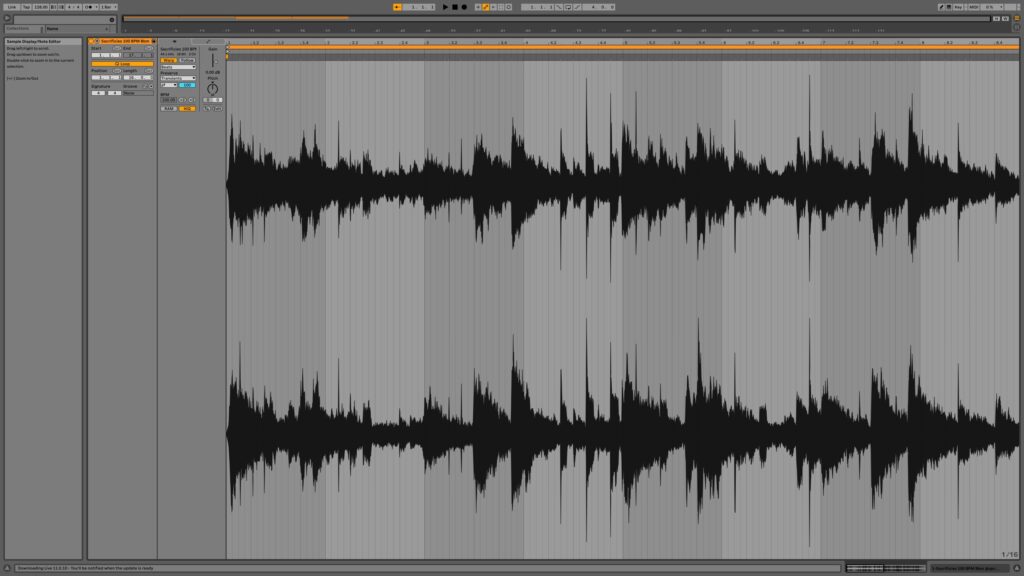
The Sample I have selected is an old soul sample. The kind that you would find in a Kanye west or Jay-Z track. This style of sample is very popular in modern-day house music and can create some very exciting tracks. The sample brings an almost nostalgic atmosphere which makes the listener feel happy while playing the track. The sample is not too long and is very rough around the edges, so a lot of mixing will be required.

The first step was to make sure the sample is on time. If the sample is not in the time I can’t put any drums or FX alongside the sample and that will make the track extremely boring to listen to. The tempo of the sample is 100 bpm so that is what I have set it to. The tempo of my track is 128 bpm, but the tempo of the project and the tempo of the sample do not have to coincide. Once this was done, I was able to start arranging the track.
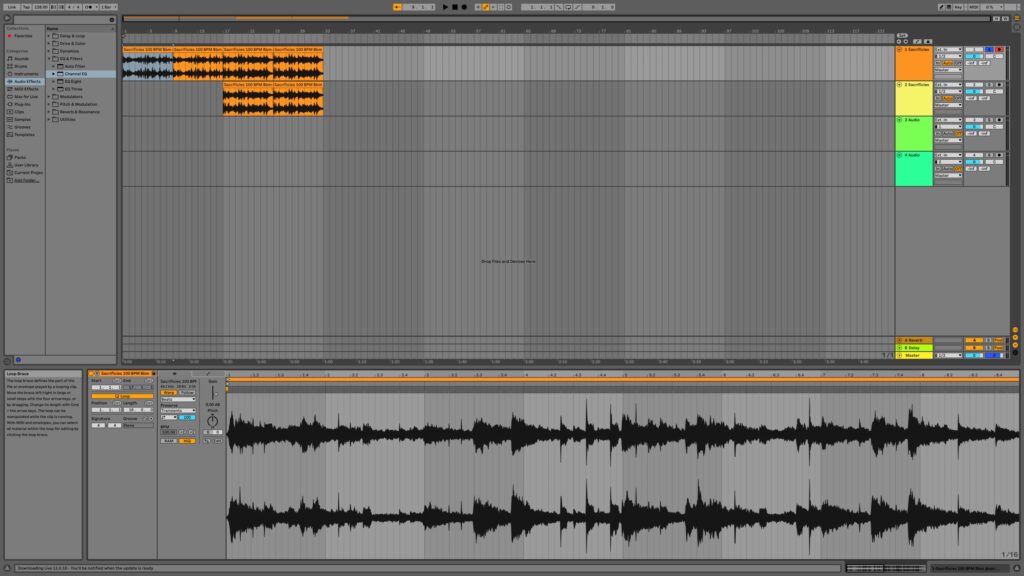
I already had an idea in my head of what I wanted this track to go like. I chopped the sample into halves. The first half is just instruments and the second half of the sample has some lyrics. I wanted to use the bit of the sample with lyrics for the drop and that is what I did. I wanted to use the first bit of the sample for breakdowns, as I didn’t want a continuous vocal all the way through the track. This separates the different parts of the song and gives it some proper structure.

As this is a house track (more specifically a french house track) a thumping bass is very important. The sample already came with a bass which made it very hard to put my own one on top. Any pattern I tried ended up clashing with the bass already in the sample and made the drop sound very messy. Instead, I used one of the sample techniques I had been taught. I duplicated the part of the sample that I wanted to be the bass and put it on the grid just underneath the original one. After this, I added a filter. I then cut out all of the high and mid frequencies of the duplicated sample so I was just left with the bass frequencies. The duplicated bass frequencies pair up perfectly with those of the original sample. This created a nice, clean-sounding bass which also had a bit of power behind it. It was able to cut through the mix and be heard.

I also did the same on the original sample. I used the same filter to create a low pass that can come in and out of the track. This would be used in the breakdowns especially to really create those light and dark moments in the track. This separates each part of the tune and creates a dynamic within the tune. This was also very helpful with the arrangement as it gave me a blueprint of where the other instruments and drums would come in and out. I selected where the filter would come in and out using automation. I drew in my automation pattern and the song was starting to take shape.

As I said at the start, a host of mixing tools and plugins would very much be needed to make this sample sound professional. To start off with I added the automated low-pass filter, but I have already discussed that in the paragraph above. Next, I added reverb and delay. The reverb created space within the sample to make it sound more modern. When samples like this are ripped from old records, they can often lose a lot of the effects and life that was in the original song. reverb helped me add that life and energy back into the sample while also making it sound interesting. The delay was purely there as ear candy for the listener. Delay added an echo-type effect to the sample so that the sample doesn’t come to an abrupt end. Every cut and chop through the sample had delayed bridging the gap between them both. Both the reverb and delay were put as automation filters which meant I could choose as and when they come in or out. This gave me complete control of the sound. I then added a vinyl distortion plugin. Mixing this sample was a balancing act as I wanted to make the sample sound more modern while also keeping the authenticity of the old record. A vinyl crackle should help me do that. All these effects working together created a nice-sounding sample that fits the style of music I want perfectly.
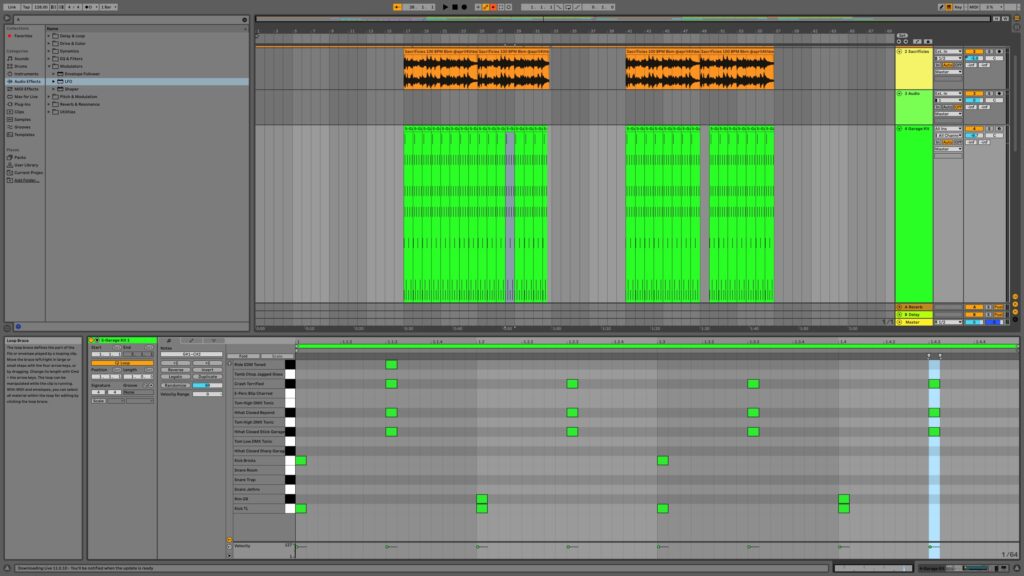
I had to create a drum loop to go over the drop. The pattern had to be fast, upbeat, and very interesting. I have had lots of experience with programming drums before so this was an easy job for me. The drums were played on a four-to-the-floor beat as usual house tracks have. There was a clap on every second kick. I opted for the clap instead of the snare options as I find it sounds better in house music. I then added hats to finish off the loop. I layered the kick with two kicks. I EQ’d one of the kicks so just the high frequencies were coming through to create a higher layer for the kick. This helps it to cut through the mix and differentiate it from the bass they are both working at roughly the same frequency. I layered the hats with multiple layers. Layering hits is important as that makes up for a lot of the high frequencies in the track. If you want a well-balanced drum pattern, hats and top loops are a must. Claps control the mid frequencies and are often deemed not as important as the other parts of the drum loop. I layered the claps multiple times to make sure I have a wide-sounding sample. The main drum kit I chose was the garage kit. Garage is a predecessor of house, so drums that work with a garage track are likely to work in a house track.
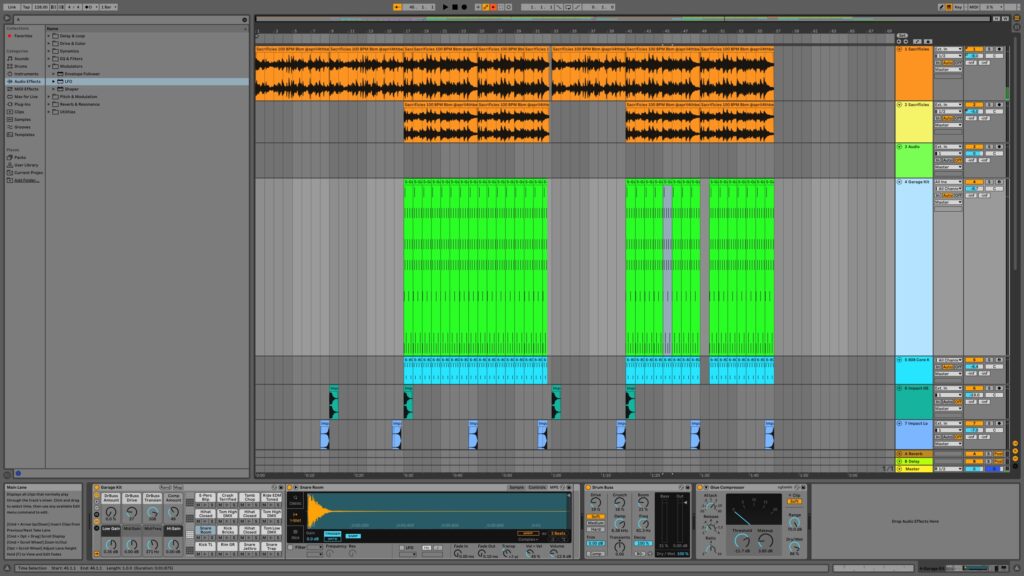
I mixed the house drums to give them a bit more grit and power. They needed to be able to poke through the sample and create the groove I want. Adding a drum bus allowed me to do this. I turned the drive and saturation up on the plugin which gave me a really nice sound. The drum bus was running at a medium level. I then added a compressor to glue all the sounds together. The compressor was working at a fast attack with a slow release. I turned down the threshold and pumped up the post. This left me with a nice-sounding pattern. The kit was already nice before the effects so I didn’t want to overdo it.

I then added another pattern to go over the top of the garage kit. I just felt like the drums were missing something and needed a few extra notes to pick up the groove. The pattern only includes a singular 808 clap and an 808 hat, but with both of these being such classic drum sounds I had to include them. The 808 claps layered very nicely with the garage kit and completed the sound that i want for the claps. I panned the different claps to create a nice big sound. The 808 claps went down the middle and the two-layered claps went left and right by 20. The same went for the hats. the 808 hat is so iconic. It is the sound that. must people pick up on when listening to classic house songs. The 808 sounds almost like a slash. It cuts right through the center of the mix and finishes off the drums perfectly. After adding this my drums were complete.
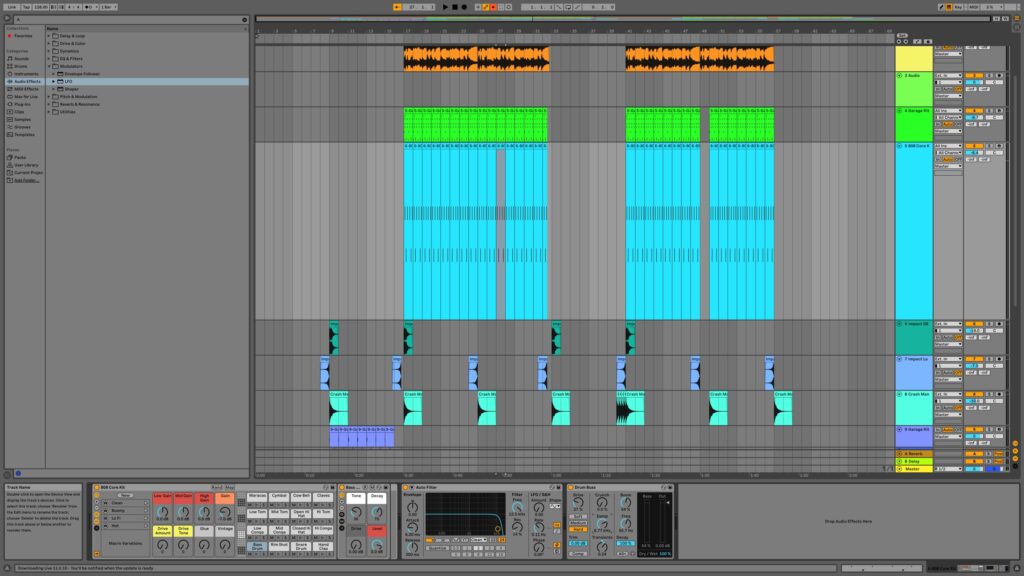
I added the same effects on the 808 kit that I did on the garage kit, with just a few changes. The main changes were that the effects were much more subtle. I didn’t want to overdo it and make the samples sound too processed. With just a bit of compression and a drum bus with a low drive, these sat nicely on top of the other loop. Drums were finished for the drop.
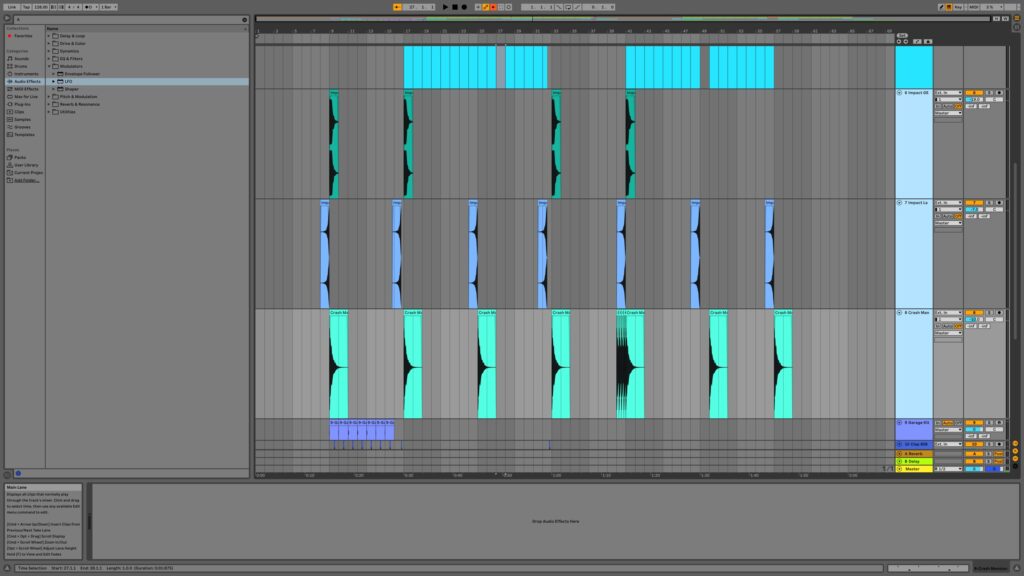
FX is a vital part of house music. The drops and transitions between different parts of the song need to be big and very pronounced. For example, in the transition from the buildup to the drop, there needs to be a lot of crashes and risers to make the drop hit hard. This is what I have added. I prefer to use crashes from the real drum kits, and use the same crashes reversed for risers. Having these real-life samples gives the track more of a human feel., and in a genre where nearly everything is digitally done, a human element is very important. This is why I try to use live-recorded instruments like horns, trumpets, and guitars whenever I can. These FX help the track to be interesting and take very little mixing to have them settled into the track.

I wanted a single kick drum hitting every 4 beats for the intro. It’s almost as if the kick is playing at half-time speed and makes the track seem more interesting. It is also a good way to build tension and get listeners ready for a drop. They know a groovy drum pattern is about to come in, but have no idea when. There’s not much else to say apart from that the kicks were there to set the tone for the rest of the track. At most points in house music, some drums should be playing. This is so if the song is being played in a club or at a festival, the groove of the track isn’t lost.
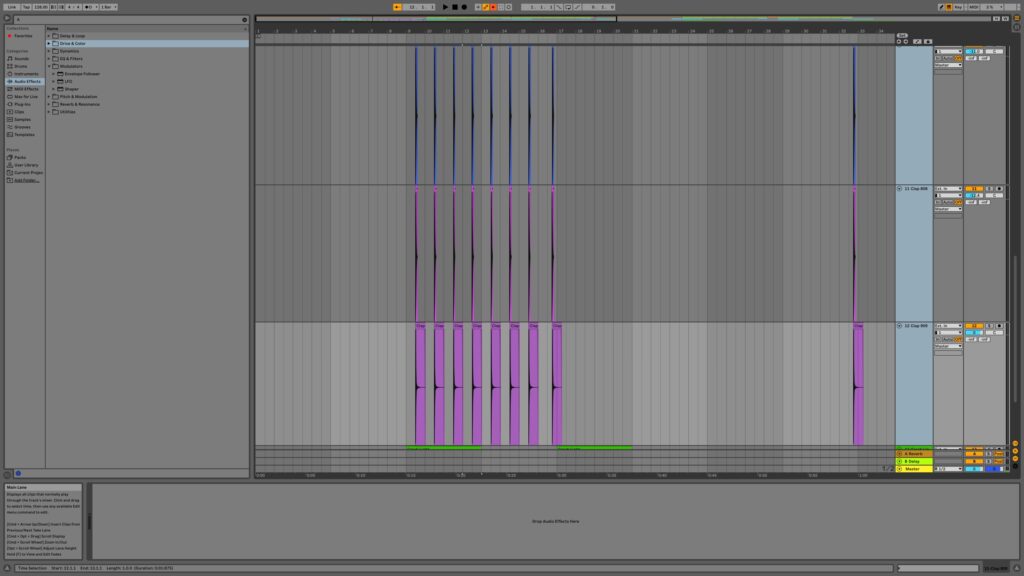
Just like the kicks, the claps are there to build tension. I didn’t want just a kick drum playing in the intro so I added a clap to create a groove. It was a choice between the claps and the hats. I feel like adding hats may pick up the pace too quickly. Claps fit the half-time speed drums perfectly. I later mixed them.
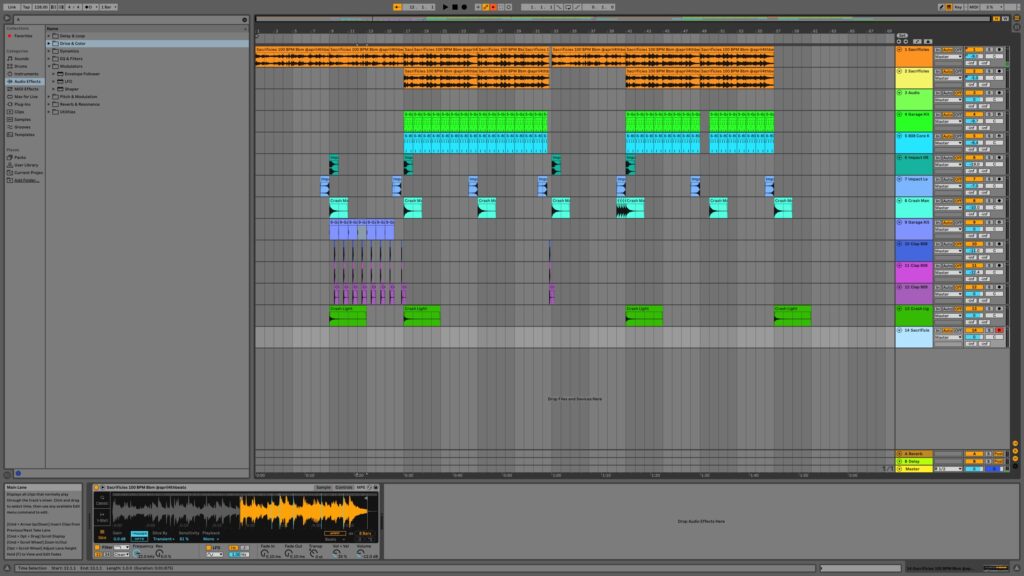
This is the final arrangement of the track. I had worked on the structure of my song which consisted of an intro, buildup, chorus, breakdown, and chorus. This is pretty standard for most of today’s house tracks. The tune runs at just 2 minutes long, but as this song was allowed to be any length, I thought I would make a really good 2-minute track rather than a mediocre 4-minute track. I think the structure is good and the song has a nice flow to it. It is interesting enough to keep the listener engaged but not so complicated that they cannot follow along.
This is a bounce of the final track. I am very happy with how it turned out. However, while listening I realized there were multiple things I could do to improve it. They were all mainly mixing. I needed to sidechain all the sample layers to the kick to create a cleaner mix. I also needed to add some further compression on other parts of the track to increase the overall quality of the song. I got to work straight away.

This is a very important part of modern-day house tracks. The sample and bassline need to be side-chained to the kicks. If they are not, the drop can often seem messy and complicated. sidechaining allows any low end of the track to dip out when the kick comes through. This makes the kick hit harder and also gives each element its own space in the mix. I didn’t want the track to sound muddled so this was a step I had to focus on. I had to sidechain each sample layer the same so they dipped out at the same time. If I didn’t do this the track would sound messy and the sidechain would not have the same effect.

The kicks and claps during the intro were sounding really harsh and weren’t having the effect that I wanted them to have on the track. These drums were meant to sound really smooth and build a sense of excitement. They were taking away from the listener’s concentration by poking through the mix and creating harsh sounds. I fixed this with some glue compression. This just made the tracks sound a little smoother and give the anticipation that I wanted them to give. It may not seem, like a lot, but it’s little alterations like this that affect the final product. This was a very positive change.
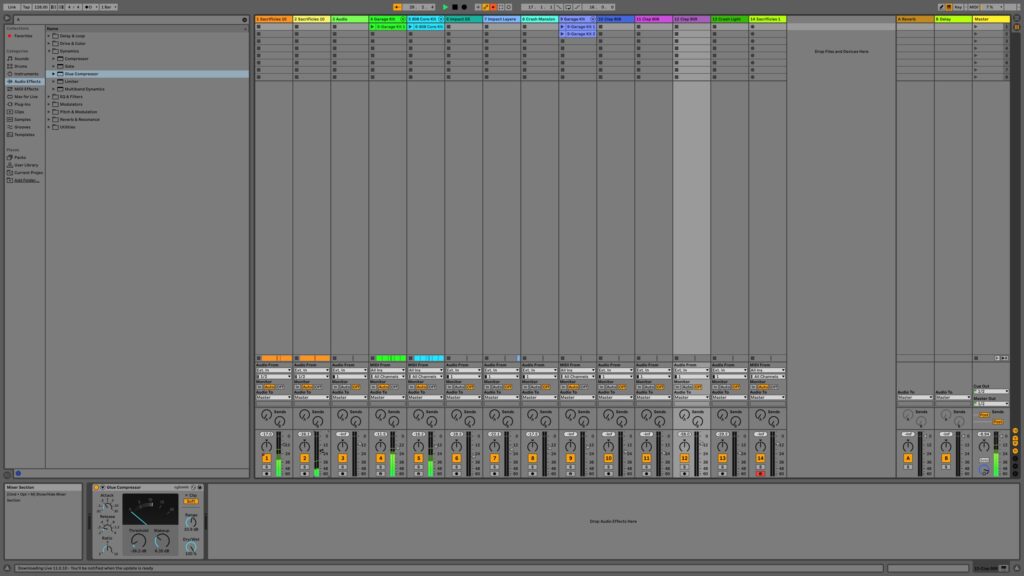
This is a very important step. This is the last step before the track goes to post-production. If the mix is not nice and clean, the master of the track will be all wrong. I took all layers to 0db and then slowly brought them up one by one. Most people would assume that all the elements and instruments need to be at the same level, but in order to have the track sounding how I want, I need to be able to push forward the parts of the track that I want to be at the forefront and bring the ones that I want to be hidden in the mix back. This creates depth within the track and allows each element to be heard.
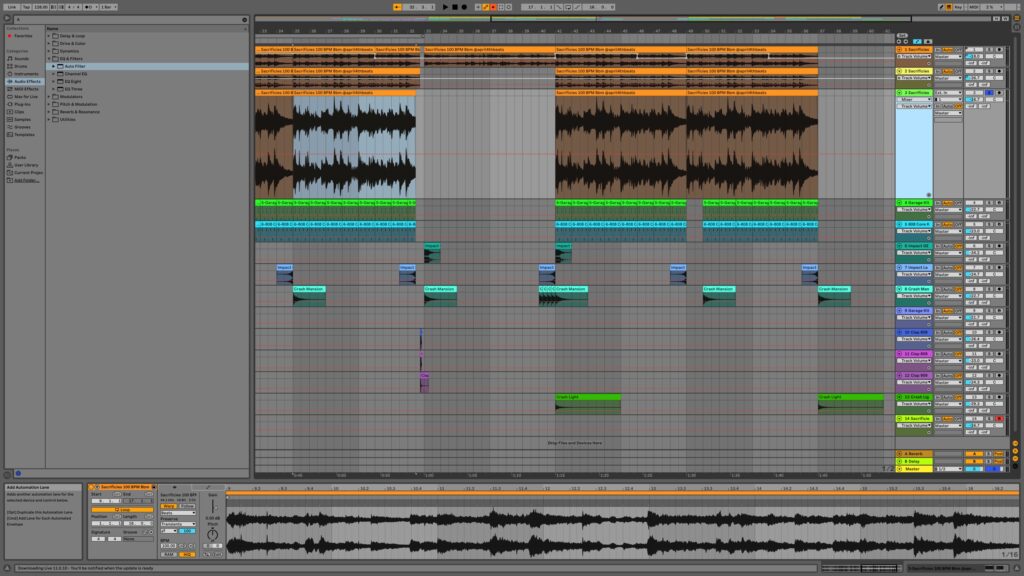
The bass on the track was lacking, so I had to take another step to make sure the low end of the track was booming when the drop came in. To make this happen, I duplicated the sample once again and had an even more extreme low pass filter on it. This just accentuated the bass in the track that little bit more and shaped it into the sound I wanted.
This is the first mix-down of the track and showcases all of the work I have done so far, In this mix, the track will sound extremely quiet. This is because I have not yet mastered the track. The master will bring everything back up from where I knocked it down in the mix. But as far as mix-downs go, this is nice and no glaring issues with the track cross my path. I will next master my track and create the finished product. This will be shown on a different page and will contain an evaluation of my final song.

